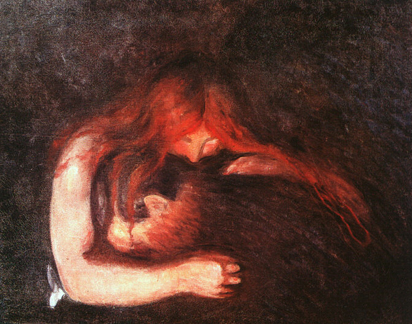VISITING the Edvard Munch exhibition at the National Gallery in London is, as might be expected, a somewhat dispiriting experience. Even more so if you happen to be an art critic, because then you have to contend not just with Munch's paintings themselves, those doom- laden effusions of Scandinavian soulfullness, but also with the terrible inevitability of the article you'll have to write about them.
Munch's commentators have found themselves circumscribed not just by the unremitting bleakness of his vision but also by its sheer consistency, with the result that there seems to be only one way of reviewing a Munch exhibition. The theme of such a review is dreadfully prescribed: Torment, Angst, The Dark Night of the Soul. But maybe (just maybe) even Munch is not beyond reinvention and rediscovery. Maybe there is a new way of seeing and writing about Scandinavia's most remarkable artist . . .
THE National Gallery's new show, ''Edvard Munch: The Frieze of Life'', is a startling, revisionist exhibition which may completely alter the received view of one of the great modern painters. Munch has long been regarded as a dour and thoroughly miserable artist: a dark, brooding man, who brooded as only Scandinavians can; the inventor of existential angst; a tormented soul who lodged his pain in paint. But this exhibition asks you to forget all those old, tired preconceptions and discover a new and previously overlooked Munch: a man who was determined, come what may, to look on the bright side of life; a painter of happy endings; a nonchalant Norwegian with a song in his heart, who greeted each new day with a smile.
The resolutely cheerful, Bohemian Munch revealed in this exhibition - a man inexplicably misunderstood by art historians until now - found the inspiration for...

Sunny side up
17-11-1992

